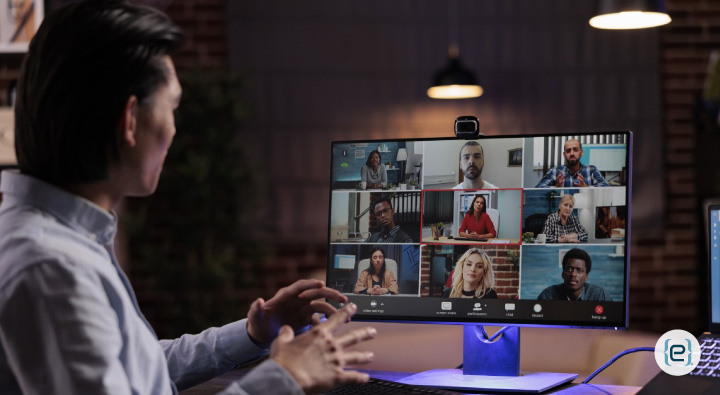The Great Work Debate: My Journey Through Remote, Hybrid, and Office Life


Having experienced all three work models—remote, hybrid, and full-time office—over the past few years, I’ve developed strong opinions about each. If you’re considering which setup is best for your productivity, well-being, and team collaboration, let me share what I’ve learned from bouncing between my home office, a hybrid schedule, and office life.
Essential Elements That Impact Your Work Effectiveness
The factors that truly shape your work experience include workspace setup, communication tools, team collaboration, work-life balance, productivity tracking, social interaction, professional development, mental health, organizational culture, and infrastructure needs. Each model puts these elements to the test in different ways.
The Remote Life: Surprising Productivity and Hidden Challenges
When the pandemic first hit, I was skeptical about working from home. Would I be able to focus with my dog begging for attention and the neighbor’s kids staging what sounded like Olympic training in their backyard? Surprisingly, I adapted better than expected.
The first month was rough. Working from my couch until my back protested forced me to invest in a proper desk setup. Once I did, my productivity soared without the usual office distractions. However, I missed the random coffee chats with colleagues that spark creativity and connection.
The biggest surprise? My work hours actually increased. Without a commute, I started earlier and ended later. That 30-minute morning traffic jam turned into extra sleep or gym time. But drawing boundaries became crucial—it’s tough to “leave work” when your office is ten steps from your bedroom.
- Cost savings: No commute costs, fewer lunch purchases, and, yes, wearing the same sweatpants three days in a row saves on laundry.
- Home expenses: My electricity bill definitely noticed the extra hours of home occupation.
Office Life: Structure, Spontaneity, and Social Energy
Last year, I switched jobs and returned to full-time office work. The structure was comforting, but I quickly remembered the stress of rush hour. That said, in-person brainstorming sessions were infinitely more productive—there’s something about spontaneous whiteboard sessions that Zoom just can’t replicate.
Office life brought back the water cooler conversations I’d missed. Quick questions got quick answers—no waiting for email responses or calendar coordination. But open offices can be productivity killers when you need deep focus time.
- Social benefits: Lunch with colleagues and impromptu chats fostered connection.
- Distractions: Some days, I just wanted to focus without hearing about Bob from accounting’s weekend golf game.
The Hybrid Approach: Flexibility with a Side of Complexity
Currently, I’m working hybrid—three days in the office, two at home. This setup initially felt like the perfect compromise, but it comes with its own challenges. The key is being strategic about which days you’re where.
- Collaboration: I schedule all my collaborative work and meetings for office days.
- Focus work: Home days are for tasks that require minimal interruption.
- Organization: The constant switching requires serious organization. Duplicate setups in both locations are expensive, but worth it.
Hybrid models require you to maintain two workspaces and two routines. You also have to be extra organized about what you need where, as forgetting a charger or important document can derail your day.
Reality Check: What Nobody Tells You
- Remote work: It’s not just working from home—it’s managing your entire professional life through a screen. You need iron-clad self-discipline and excellent communication skills.
- Office work: Hidden time costs add up—getting ready, packing lunch, small talk between meetings. Yet, those casual conversations can lead to valuable insights.
- Hybrid work: It seems ideal but requires the most planning and adaptability.
The Productivity Question: It Depends on the Task
My most productive days happen in all three settings. It depends on the type of work, not the location. Writing reports? Home office wins. Creative collaboration? In-person shines. Regular tasks? Either works fine.
Tracking productivity is easier with the right tools. If you’re struggling to measure output in any environment, consider leveraging advanced IT support to streamline your workflow and ensure you have the right technology in place.
The Communication Factor: Adapting Your Style
Each model demands different communication styles. Remote work requires intentional connection—you can’t rely on casual run-ins. Office work can suffer from too much immediate access. Hybrid needs clear boundaries about when and how to reach people. For seamless communication, robust collaboration tools are essential.
Team Dynamics: Building Connection Across Models
Team dynamics vary significantly between models. Remote teams tend to be more formal in their interactions but often share more personal details during video calls (probably because we’re literally in each other’s homes). Office teams have more natural rapport but can fall into social cliques. Hybrid teams need to work harder at inclusion, ensuring remote workers don’t become second-class citizens.
If you want to foster strong team collaboration regardless of location, consider adopting top collaborative tools that bridge the gap between remote and in-person interactions.
The Future Perspective: Flexibility Is Here to Stay
Looking ahead, the future isn’t about choosing one model, but about matching the right model to each role and person. Some jobs genuinely need in-person interaction. Others thrive remotely. Most could benefit from flexibility. Technology makes all these models possible, but it’s not perfect—virtual meetings still can’t fully replace in-person energy, and hybrid workers juggle multiple devices and systems.
If your organization is navigating this transition, managed IT services can help streamline infrastructure, secure your data, and empower your team—no matter where they work.
Finding Your Fit: Personalizing Your Work Model
The best work model for you depends on your role, personality, home situation, and work style. I’ve seen extroverts wilt in remote settings and introverts thrive. Some hybrid workers master the balance, while others struggle with constant switching.
After experiencing all three models, I’ve learned there’s no perfect solution. Each has distinct advantages and challenges. The key is understanding your own work style and needs, then finding (or negotiating) the model that best supports them.
Remember, what works for others might not work for you. Some people love the structure of office life. Others thrive in the flexibility of remote work. Some need the variety of hybrid arrangements. The best model is the one that helps you do your best work while maintaining your well-being.
Ready to optimize your work environment or empower your team for any model? Contact eMazzanti today to discover how we can help you build the flexible, secure, and productive workspace you need.
Recent Posts
Step Up Your Threat Response With Security Copilot
As we move deeper into 2025, you are probably focusing on ways to expand your…
Watch Out for the Cyber Security Menace
As we move deeper into 2025, you are probably focusing on ways to expand your…
The Rise of AI Agents: Simplifying Tasks and Connecting Technologies
Introducing eCare Bot: Your Intelligent IT Support Assistant In today's fast-paced world, the emergence of…
Server Simplified
At eMazzanti Technologies, we recognize that stable, effective, and expandable servers are essential to the seamless operation of enterprises. For this reason, we collaborate with Hewlett Packard Enterprise (HPE) to offer our clients the best server solutions possible, customized to meet their unique requirements. HPE servers provide the performance and flexibility required for small and big businesses to manage data, support apps, and manage workloads with ease. Customers may choose the best HPE servers for their organization with the assistance of our team of specialists. We take the time to comprehend the particular needs of every client, including those related to processing speed, storage capacity, and security features. Whether our clients require a general-purpose ProLiant server or a…
How to Make Your AI Copy Sound Authentic: Writing Like a Human, Not a Machine
AI writing tools have become popular for creating content quickly. But many readers can spot…
Data Analytics for Old-School Business Owners: Turning Dusty Ledgers into Gold Mines
Data analytics is changing the game for businesses of all types, including old-school industries that…


